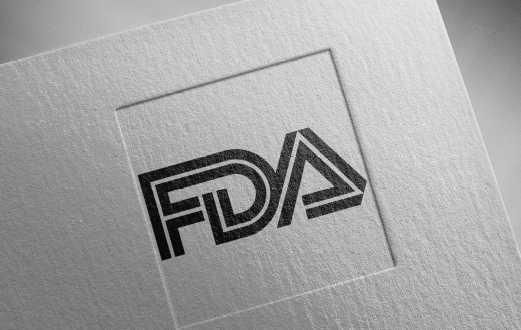Navigating the regulatory landscape of the Food and Drug Administration (FDA) is a critical step in bringing medical devices, pharmaceuticals, or biologics to market. The process can be daunting, requiring rigorous documentation, adherence to strict guidelines, and often, significant financial investment. Amid these challenges, the FDA’s pre-submission meetings stand out as a valuable resource for companies seeking to streamline the approval process and enhance the likelihood of success.
Patrick Gora explores the purpose, structure, and benefits of FDA pre-submission meetings, offering insights into how these interactions can optimize regulatory submissions and facilitate smoother approval pathways.
Understanding FDA Pre-Submission Meetings
The FDA pre-submission meeting is a formal process allowing sponsors (companies or researchers developing a product) to engage directly with the FDA to receive feedback on specific aspects of their submission. It is part of the FDA’s broader “Q-Submission Program,” designed to improve communication and collaboration during the regulatory process.
Pre-submission meetings are particularly valuable for novel or complex products where regulatory requirements may not be immediately clear. These meetings serve as an opportunity to discuss:
- Study Designs: Ensuring clinical trials or pre-clinical studies align with FDA expectations.
- Regulatory Pathways: Determining the most appropriate pathway (e.g., 510(k), De Novo, PMA for medical devices).
- Data Requirements: Clarifying the types and amounts of data required for a successful submission.
- Potential Challenges: Identifying areas of concern that could hinder approval.
Types of FDA Pre-Submission Meetings
Depending on the product and the nature of the submission, pre-submission meetings can take several forms:
- Type A Meetings: Often requested to address stalled programs or disputes requiring urgent resolution.
- Type B Meetings: Scheduled at critical milestones in product development, such as pre-Investigational New Drug (pre-IND) or pre-market approval application (PMA) stages.
- Type C Meetings: Cover any other topics not fitting into Type A or B, offering additional opportunities for discussion.
Each type is tailored to address specific issues, enabling sponsors to align their development and submission strategies with FDA expectations.
The Importance of Preparation
To maximize the benefits of a pre-submission meeting, preparation is key. Companies must submit a detailed meeting request, outlining the topics for discussion and providing sufficient background information. This includes:
- Clear Objectives: Articulating specific questions or issues for which feedback is sought.
- Supporting Documentation: Providing data summaries, study protocols, or draft submission sections relevant to the discussion.
- Proposed Agenda: Structuring the meeting to cover all essential topics efficiently.
The FDA reviews these materials to prepare responses, ensuring that the meeting is productive and focused.
Benefits of FDA Pre-Submission Meetings
- Guidance on Regulatory Requirements
One of the primary benefits of pre-submission meetings is the guidance provided by FDA reviewers. These discussions can help clarify regulatory expectations, reducing the risk of misaligned submissions that lead to delays or rejections. - Risk Mitigation
By identifying potential issues early, sponsors can address deficiencies before submitting their applications. This proactive approach can save significant time and resources. - Building Relationships with FDA Reviewers
Pre-submission meetings foster collaboration and build rapport with FDA reviewers, establishing a foundation for open communication throughout the approval process. - Streamlining Development
Sponsors can align their study designs and data collection efforts with FDA requirements, eliminating unnecessary work and focusing on what matters most for approval. - Increased Likelihood of Approval
Products developed with FDA input during the pre-submission phase often have a higher likelihood of regulatory approval due to the alignment of data and study designs with FDA standards.
Common Pitfalls to Avoid
While pre-submission meetings offer substantial benefits, sponsors should avoid certain pitfalls to ensure success:
- Insufficient Preparation: Failing to provide detailed information can lead to vague feedback or delays in scheduling.
- Unclear Questions: Ambiguously worded questions may result in equally ambiguous answers, reducing the meeting’s value.
- Ignoring Feedback: Disregarding FDA recommendations can lead to misaligned submissions and increased risk of rejection.
- Overloading the Agenda: Attempting to cover too many topics can dilute the quality of feedback and leave critical issues unresolved.
A Real-World Example: A Case Study
Consider a hypothetical case where a medical device company develops a novel diagnostic tool. Unsure of the appropriate regulatory pathway, the company requests a pre-submission meeting with the FDA. During the meeting, FDA reviewers recommend pursuing the De Novo pathway, provide feedback on the proposed clinical study design, and highlight additional data requirements. By incorporating this guidance, the company avoids potential pitfalls, submits a comprehensive application, and receives FDA approval on the first attempt.
This example illustrates the tangible benefits of pre-submission meetings in accelerating time-to-market while ensuring compliance.
Conclusion
FDA pre-submission meetings are a cornerstone of successful regulatory strategy, offering sponsors an opportunity to engage with regulators, clarify expectations, and address potential challenges early in the process. These meetings help streamline development, mitigate risks, and improve the likelihood of approval for medical devices, pharmaceuticals, and biologics.
For companies navigating the complexities of FDA regulations, leveraging pre-submission meetings is not just an option but a strategic imperative. With careful preparation and a collaborative approach, these meetings can transform regulatory hurdles into manageable steps toward market success.
